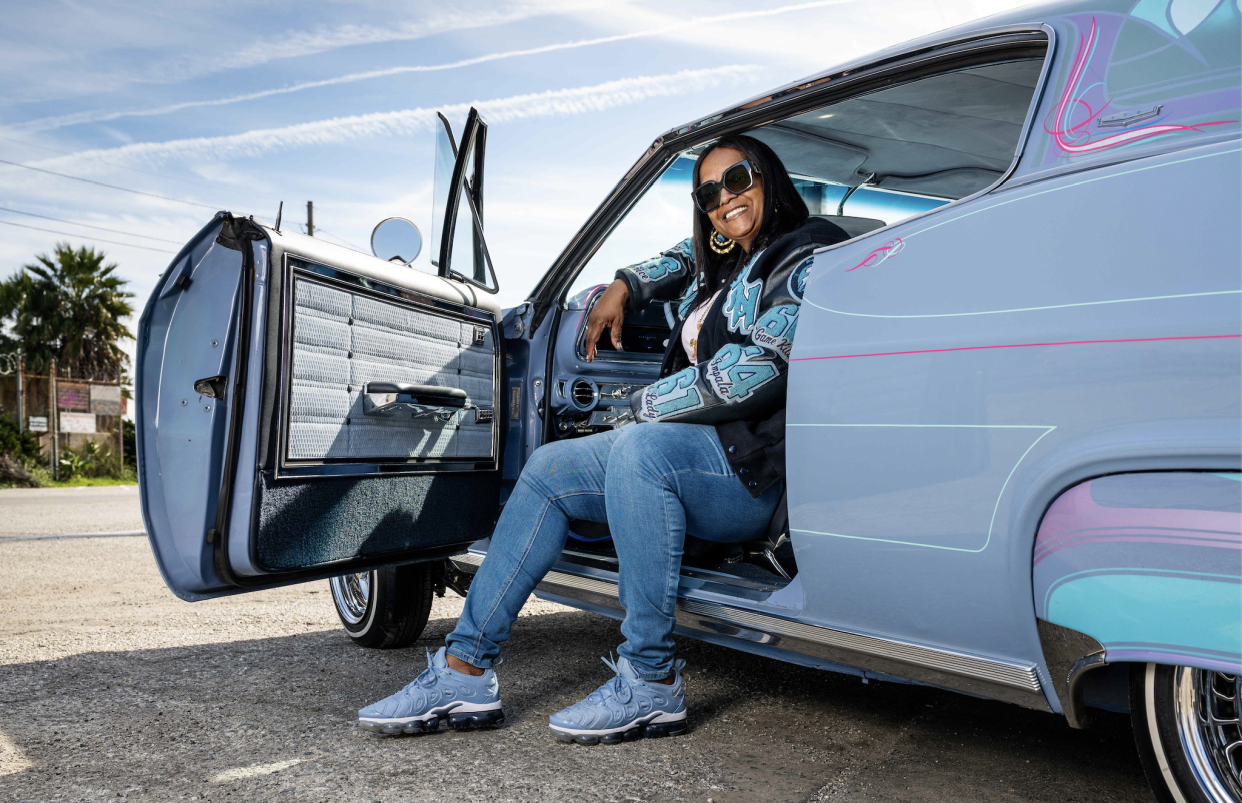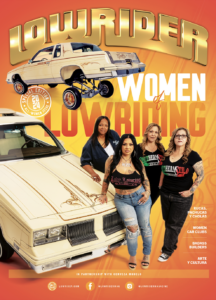The ‘First Lady Of Lowriding’ Hopes To Inspire More Women To Join The Community

Lowrider cars are more than hydraulics, dazzling paint jobs, and custom upholstery. They are a totem of a lifestyle and a celebration of culture.
These captivating styles of vehicles date back to post-World War II when car culture swept the nation. While many were obsessed with hot rods, Mexican Americans favored customizable cars that made recognizing each other accessible on and off the road.
The intricate alterations were more than just ways to stand out; they celebrated empowerment and culture. A similar representation of the culture is Modelo beer. With origins in Mexico dating nearly 100 years, Modelo celebrates those who drive this culture forward.
To honor those who haven’t received their just due, Modelo teamed up MotorTrend to launch a special edition of Lowrider magazine that spotlights the women of lowriding throughout the entire issue.
The brands say that the “one-time re-issue” of Lowrider is made by women, for women.” The special edition features an all-women team, including photographers, creative directors and writers. The issue also welcomes Dr. Denise Sandoval, a university professor of Chicana/o studies, as the editorial director.
The brand also donated advertising space in the publication to women-owned businesses to further support and spotlight the ladies that impact the lowrider industry.

Historically, Lowrider magazine often limited women to modeling or acting as car accessories. However, this limited-edition issue highlights the women behind the wheel.
One of the women is Tina Blankenship-Early of Los Angeles. Blankenship-Early is a veteran in the lowrider scene. Known in the community as “First Lady,” Blankenship-Early was the first woman inducted into the National Lowrider Hall of Fame and Lowrider magazine Hall of Fame.
Blavity spoke with Blankenship-Early about what lowriders mean to her and how she transformed her passion for car building into a cultural movement.

Owning a lowrider is more than just owning a car; it’s a lifestyle. When were you introduced to it?
Tina Blakenship-Early: I was introduced to lowriding at a young age while still in elementary school.
Did you think it was just a local LA thing? When did you realize folks loved it nationwide?
TBE: Growing up, I did because you aren’t fully exposed to everything until you have a lowrider or are in a club and fully vested. Then you start to see the videos and DVDs from “Young Hogg,” who was the first to video lowriding and went worldwide, selling volumes out of state and overseas. It opened a whole new world of lowriding.
Often, anything with vehicles centers around men. Did you ever feel ostracized or realize you were the only woman in the crew?
TBE: Personally, I’ve never felt ostracized because I was doing a lot of the guys’ audio systems in their cars, so they already knew I was a car girl before I started lowriding and getting more involved in the scene.
Has that men-centered environment changed over the years?
TBE: When I started lowriding, a female car club called Lady’s 1st started around the same time. I believe the club stayed together for four or five years, and then the ladies parted ways. As for my car club, I am the only woman, and my club brothers are happy with me being the only woman, but I’m sure eventually more will come around.
What was your first lowrider? Do you have any special memories?
TBE: My first lowrider was a ’65 Impala that never made it to the streets. I sold it in pieces and built an ’84 Regal. This was the most fun car I had. I learned everything in that car, from hopping and three-wheeling to how to fix and work on my own hydraulics.
What are some things about maintenance or specs for a lowrider that the typical car owner wouldn’t know or pay attention to?
TBE: Normal cars don’t have rap frames, extended arms reinforced, trailing arms, and reinforced rear ends. There’s so much reinforcement so that the cars can withstand the hopping and the weight.
Lowrider culture on the West Coast has been associated with Black and brown people and, sometimes, stigmatized. Did you ever experience that? Has it changed?
TBE: Yes, I’ve been pulled over by LAPD, and the officer asked if I was a gang member. I’ve also been out rolling with my car club, and the officers have looked in every car and will wait for me to catch up and pull me over.
What did it mean to you to become the first woman inducted into the National Lowrider Hall of Fame?
TBE: Being the first woman inducted into the National Lowrider Hall of Fame felt amazing. The magazine has been in existence for a long time and has always inducted male figures. Honestly, I thought more females would get inducted before I did in 2012.
Have you ever imagined yourself as the focus of Lowrider magazine?
TBE: I never imagined being the focus of Lowrider magazine. You always hear people in the book say they knew this person or that person, so it’s one of those things you don’t always think about.
How important is the partnership between Lowrider and Modelo in highlighting women within the lowrider culture?
TBE: I commend Lowrider magazine and Modelo for highlighting women. It’s important that our stories and commitment to this lifestyle be shared with the world. It’s very important since, in the past, the number of ladies riding was double digits, but now it is triple digits. Several all-female clubs are evolving, but we’re still a small percentage. Hopefully, this will inspire other women to become part of the community sooner rather than later.

